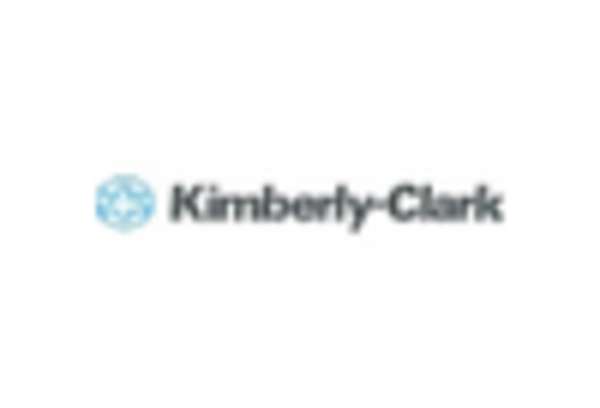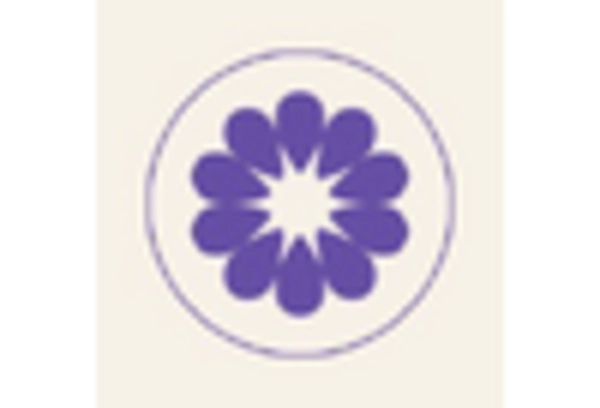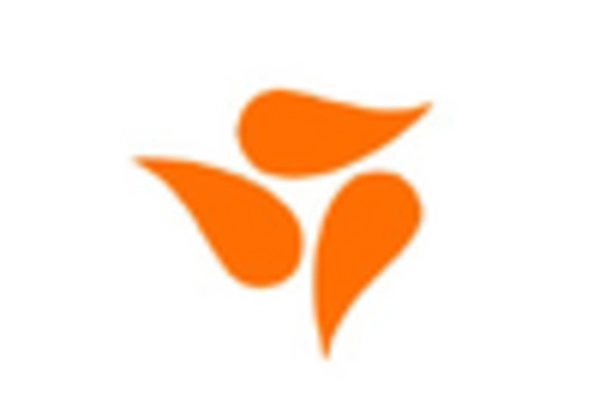Increased Awareness of Postpartum Health
The rising awareness surrounding postpartum health issues appears to be a significant driver for the Postpartum Product Market. As more women and healthcare providers recognize the importance of addressing postpartum recovery, there is a growing demand for products that cater to this need. Reports indicate that nearly 70% of new mothers experience some form of postpartum complication, which has led to an increased focus on maternal health. This heightened awareness is likely to propel the market forward, as consumers seek effective solutions for recovery and wellness. Furthermore, educational campaigns and resources provided by healthcare professionals contribute to this trend, encouraging women to prioritize their postpartum health. Consequently, the Postpartum Product Market is expected to expand as more products are developed to meet the needs of this demographic.
Rising Birth Rates and Maternal Population
The rising birth rates and the expanding maternal population are pivotal factors influencing the Postpartum Product Market. Recent statistics indicate that birth rates have shown a steady increase in various regions, leading to a larger pool of postpartum women seeking products for recovery and support. This demographic shift is expected to create a sustained demand for postpartum products, as new mothers actively seek solutions to aid their recovery process. Moreover, the increasing number of women choosing to have children later in life may also contribute to a greater focus on postpartum health, as older mothers often require more specialized care. Consequently, the Postpartum Product Market is poised for growth, driven by the expanding maternal population and their evolving needs.
Government Initiatives and Support Programs
Government initiatives and support programs aimed at maternal health are increasingly influencing the Postpartum Product Market. Various countries are implementing policies to improve postpartum care and support for new mothers, which may include funding for maternal health programs and resources. These initiatives often emphasize the importance of postpartum recovery, leading to increased awareness and demand for related products. For instance, some governments are providing financial assistance for postpartum care, which could encourage more women to invest in products that facilitate their recovery. Additionally, public health campaigns aimed at educating mothers about postpartum health can further drive interest in the market. As these government efforts continue to evolve, the Postpartum Product Market is expected to experience growth, driven by enhanced support for maternal health.
Influence of Social Media and Online Communities
The influence of social media and online communities plays a crucial role in shaping the Postpartum Product Market. Platforms such as Instagram and Facebook have become vital spaces for new mothers to share experiences, seek advice, and discover products tailored to their postpartum needs. This trend has led to the emergence of numerous online communities focused on postpartum health, where women can connect and support one another. As a result, product recommendations and reviews shared within these communities significantly impact purchasing decisions. Data indicates that nearly 80% of consumers trust online reviews as much as personal recommendations, highlighting the power of social media in driving product awareness and sales. Consequently, the Postpartum Product Market is likely to benefit from this trend, as brands leverage social media marketing strategies to reach their target audience effectively.
Technological Advancements in Product Development
Technological advancements in product development are transforming the Postpartum Product Market. Innovations in materials and design are leading to the creation of more effective and comfortable postpartum products. For instance, the introduction of smart textiles and wearable technology is enhancing the functionality of postpartum garments and accessories. Data suggests that the market for smart textiles is projected to grow significantly, indicating a shift towards more sophisticated product offerings. Additionally, advancements in manufacturing processes allow for greater customization and personalization of products, catering to the unique needs of postpartum women. This trend not only improves user experience but also fosters brand loyalty, as consumers are more likely to invest in products that are tailored to their specific requirements. As a result, the Postpartum Product Market is likely to witness substantial growth driven by these technological innovations.


















Leave a Comment